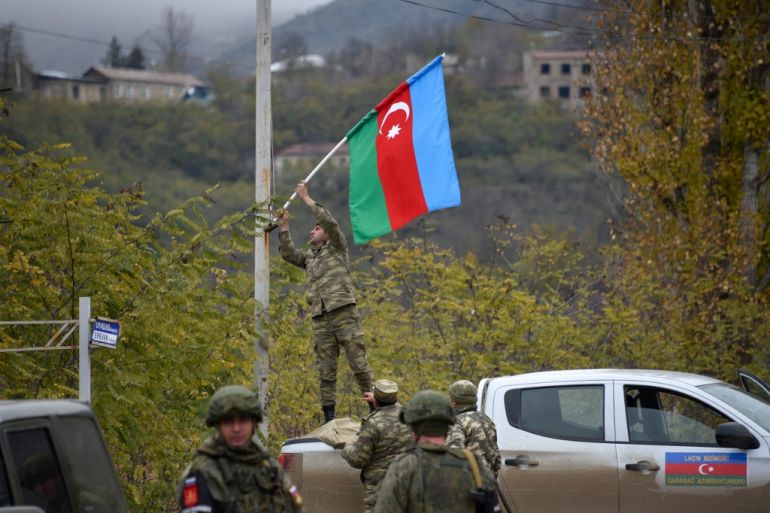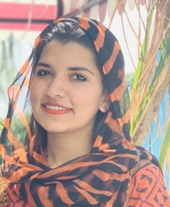Introduction
Nagorno-Karabakh is a hilly region in the South Caucasus Mountains of Armenia. The region is primarily inhabited by Armenians, but there is a sizable Azerbaijani minority. Around 120,000 ethnic Armenians live in the region, which is officially recognized as part of Azerbaijan. The conflict in Nagorno-Karabakh is complicated, and there are numerous opposing viewpoints on it. The region of Nagorno-Karabakh, according to Azerbaijan, is a legal extension of its own territory and is not occupied by Armenia. On the other side, Armenia is of the view that the Armenian population in the territory has the right to live in peace and security as well as the right for Nagorno-Karabakh to exercise its right to self-determination.
Historical Background
The Nagorno-Karabakh conflict between Azerbaijan and Armenia dates back to the early twentieth century, when both nations were part of the Russian Empire. Following the fall of the Russian Empire in 1917, the two countries fought a brief war over Nagorno-Karabakh, which ended with a cease-fire in 1920. Nagorno-Karabakh was integrated as an independent province into the Azerbaijan Soviet Socialist Republic by the Soviet Union in 1923. Tensions between Azerbaijan and Armenia over Nagorno-Karabakh intensified in the late 1980s, and a full-fledged war broke out in 1992. The Organization for Security and Co-operation in Europe (OSCE) launches the Minsk Group process in 1992 to promote a peaceful, negotiated resolution to the conflict between Azerbaijan and Armenia over Nagorno-Karabakh. Nearly 30,000 people were killed and nearly 1 million were displaced during conflict. A cease-fire was signed in 1994, but the issue remained unsolved. The April conflict, sometimes referred to as the four-day conflict, started in 2016 between Azerbaijan and Armenia. Since then, various attempts to end the dispute through dialogue have been attempted, but none have been successful.
Following that, the Nagorno-Karabakh conflict between Azerbaijan and Armenia then erupted again in September 2020, leading to the worst conflict since the 1994 truce. Over 6,000 people, both military personnel and civilians, died during the 44-day conflict. A new cease-fire deal was agreed in November 2020, cementing important achievements for Azerbaijan.
Significant Developments
In 2021, the European Union (EU) launched a new monitoring mission to Armenia, and Russia deployed about 2,000 Russian peacekeepers to Nagorno-Karabakh as part of the ceasefire agreement. Armenia and Azerbaijan also held their first direct talks since the 2020 war. In 2023, tensions remained high as both sides continued to build up their militaries. The Lachin corridor, the only road connecting Nagorno-Karabakh to Armenia, was blocked by Azerbaijan’s Government in December 2022, causing severe shortages of food, medicine, and other essential supplies in Nagorno-Karabakh. Azerbaijan accused Armenia of bringing in military supplies via the road, which Armenia denied.
The most recent development is, Azerbaijan began a military operation against the Nagorno-Karabakh area on September 19, 2023. This escalation occurred when Russia, a leading power broker in the area, is busy in Ukraine conflict. The military operation in Azerbaijan had the full endorsement of Turkish President Recep Tayyip Erdogan. Turkey, a longtime supporter of Azerbaijan, sees Armenia as one of its major adversaries in the region. In an online statement, Erdogan stated, “We support the steps taken by Azerbaijan with whom we act together with the motto of one nation, two states to defend its territorial integrity.” According to Azerbaijan, the operation objectives were to “disarm and remove” Armenian forces that were operating inside the enclave unlawfully while also defending local ethnic Azerbaijani minority. Armenia’s Defense Ministry responded and denied the presence of its forces in the region.

Azerbaijan-Armenia Ceasefire Deal
A day after commencing an operation to seize control of the enclave, Baku declared that it had accepted a proposal for a truce after the Nagorno-Karabakh region’s separatist troops from Armenia accepted the terms of a cease-fire that indicated Baku would retake control of the region.. On September 20, 2023, a cease-fire deal was reached between the two countries. According to the Russian Defense Ministry, the deal was brokered by Russia. Before both sides announced a total cease-fire, the Azerbaijani army claimed it had taken more than 90 sites from the ethnic Armenians. However, the next day, on September 21, 2023, Armenians from Nagorno-Karabakh accused Azerbaijan of breaking a truce as peace negotiations got underway. Baku denied and dismissed the accusations as completely false. Earlier, protestors gathered in the capital to demand the resignation of Armenia’s Prime Minister and protest the government’s alleged failure to back Armenian separatists.
A day after commencing an operation to seize control of the enclave, Baku declared that it had accepted a proposal for a truce after the Nagorno-Karabakh region’s separatist troops from Armenia accepted the terms of a cease-fire that indicated Baku would retake control of the region. On September 20, 2023, a cease-fire deal was reached between the two countries. According to the Russian Defense Ministry, the deal was brokered by Russia. Before both sides announced a total cease-fire, the Azerbaijani army claimed it had taken more than 90 sites from the ethnic Armenians. However, the next day, on September 21, 2023, Armenians from Nagorno-Karabakh accused Azerbaijan of breaking a truce as peace negotiations got underway. Baku denied and dismissed the accusations as completely false. Earlier, protestors gathered in the capital to demand the resignation of Armenia’s Prime Minister and protest the government’s alleged failure to back Armenian separatists.
Conclusion
The conflict over Nagorno-Karabakh remains a major source of tension between the two countries, and there is no easy solution. The September clashes were the most serious outbreak of violence since the signing of the 2020 ceasefire agreement which raised the risk of a new conflict between the two countries. Future relations between Azerbaijan and Armenia will be influenced by a variety of factors, including how both countries are willing to talk. In this situation, the international community must play its role to establish peace and end the dispute. If Azerbaijan and Armenia are unable to negotiate diplomatically, this could have catastrophic consequences for the peace and stability of both countries as well as the region.

Research Associate, Pakistan House



